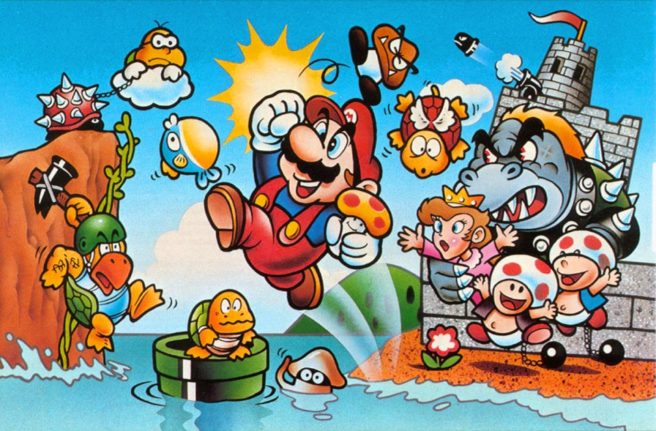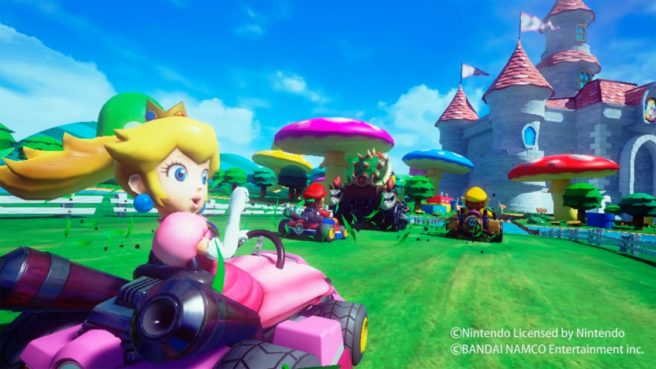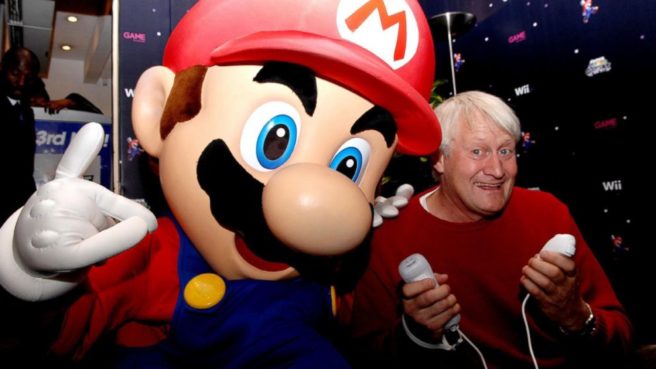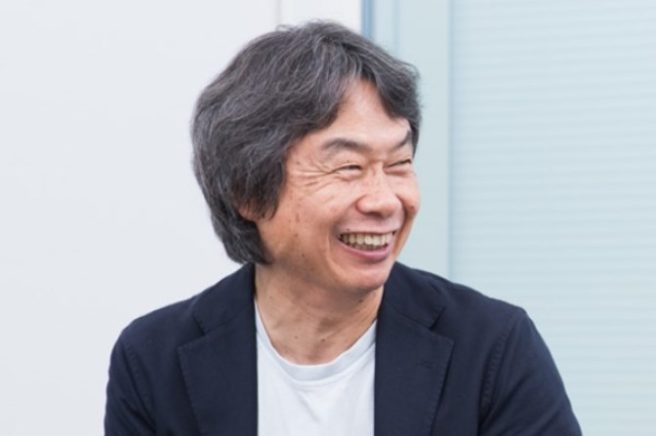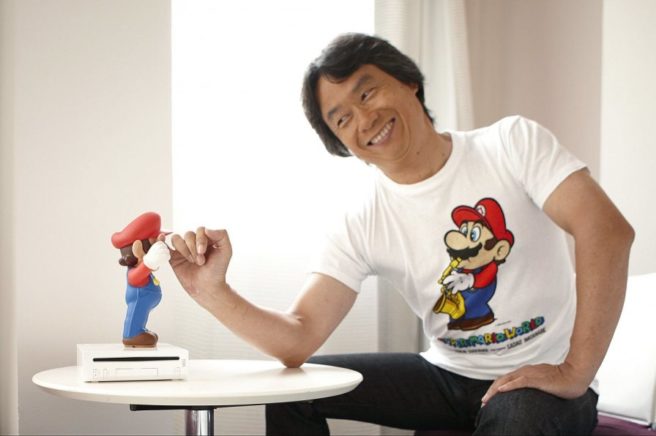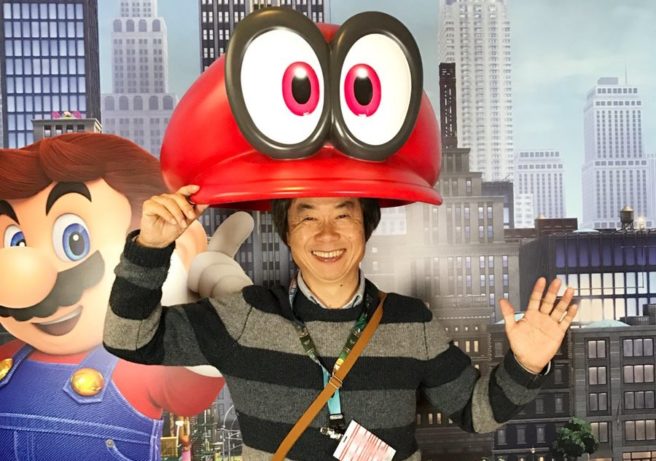Miyamoto on creating new styles of 2D Mario art, interest in having classic games on Switch
Posted on 8 years ago by Brian(@NE_Brian) in General Nintendo, News, Switch | 35 Comments
Back at E3, Game Informer interviewed Shigeru Miyamoto. The site only published a portion of its discussion at the time, but to celebrate Super Mario Odyssey, has now shared the rest of the comments. Game Informer spoke with Miyamoto about a few different things, including the approach to 2D Mario art going forward and interest in having classic games on Switch.
You can read Miyamoto’s responses about these topics below. For the full interview, head on over here.
More: interview, Shigeru Miyamoto, top
Nintendo on the creation of Star Fox 2, the SNES controller, and more
Posted on 8 years ago by Brian(@NE_Brian) in General Nintendo, News | 8 Comments
Just like with the NES Classic Edition, Nintendo is producing a series of interviews centered around the games included in the Super NES Classic Edition. First up: Star Fox 2. Shigeru Miyamoto, Takaya Imamura, and Tsuyoshi Watanabe were all brought in for the discussion.
All three developers talked about the creation of Star Fox 2, why it was cancelled, and bringing it back for the SNES Classic Edition. They also spoke about making the original controller for the SNES, among other topics.
Continue on below for the full interview.
Miyamoto offered input for Mario Kart Arcade GP VR, Nintendo reworked its IP rules for the game
Posted on 8 years ago by Brian(@NE_Brian) in General Nintendo, News | 0 comments
Mario Kart Arcade GP VR is one of several attractions at VR Zone Shinjuku. We’ve seen various versions of Mario Kart in arcades before, but this marks the first time that it’s in VR.
Of course, Nintendo didn’t develop the game directly. Like previously Mario Kart Arcade GP titles, Bandai Namco was primarily responsible. However, that doesn’t mean Nintendo was absent from the process entirely.
As it turns out, Mario Kart Arcade GP VR was made in consultation with Nintendo. Shigeru Miyamoto even offered input while the project was in development. According to producers Junichiro Koyama and Yukiharu Tamiya, Nintendo reworked its IP rules to take the special requirements of VR into account.
Thanks to Yoko for the tip.
Charles Martinet on Miyamoto: “He is one of the nicest people I’ve ever met in my life”
Posted on 8 years ago by Brian(@NE_Brian) in General Nintendo, News | 4 Comments
Charles Martinet, the voice of Mario, was in attendance at Indiana Comic Con. During the Q&A portion of a panel Martinet was at, one of the questions was about what Shigeru Miyamoto – the creator of the IP – is like.
Martinet said in response:
He is one of the nicest people I’ve ever met in my life. Shigeru Miyamoto is (the creator obviously of Mario and Zelda) and took games from being this simple place, from being non-existent to existing with a plot, and a character, and a through-line for the first time, and then brought on side-scrolling, and then three dimensions.
It’s remarkable the amount of joy and happiness and work and fun he’s brought to the world. And he’s the nicest most kind considerate thoughtful wonderful human being you could ever hope to meet.
When he originally auditioned as the voice of Mario, Martinet hadn’t even heard of Nintendo. Martinet now feels that he’s the “luckiest guy in the world” since he loves the people he works with and enjoys meeting those “who enjoy the things that I do.”
More: Charles Martinet, Shigeru Miyamoto
Dylan Cuthbert worked on a DS game that was 90% complete before being canned, was “one of Miyamoto’s pet projects”
Posted on 8 years ago by Brian(@NE_Brian) in DS, News | 16 Comments
It took more than two decades, but Star Fox 2 is finally seeing the day of light after so many years. Nintendo will be including the game on the Super NES Classic Edition later this year.
Dylan Cuthbert was among the developers who worked on Star Fox 2 way back in the day. As it turns out, that isn’t the only game Nintendo put on hold after it was so close to completion.
In an interview with Gamasutra, Cuthbert vaguely spoke about a DS game – apparently “one of Miyamoto’s pet projects” – that was 90 percent complete:
“There is a game we worked on with Nintendo, one of Miyamoto’s pet projects for the DS, but apart from that I can’t divulge anything. It got canceled at about a 90% state of completion but didn’t go through Mario Club or the QA process. It was a pretty interesting project!”
Sadly, Cuthbert didn’t say anything else about the project. That only leaves us to speculate as to what the game was and why Nintendo put the breaks on it.
More: Dylan Cuthbert, interview, Shigeru Miyamoto, top
Miyamoto on Mario – letting other devs work with the IP, New Donk City worries, not interested in remakes, more
Posted on 8 years ago by Brian(@NE_Brian) in General Nintendo, News | 27 Comments
IGN has a lengthy new piece with Shigeru Miyamoto all about Mario. Miyamoto talked about letting other developers handle the IP, his initial worries with how players would react to New Donk City in Super Mario Odyssey, and not wanting to remake older games.
We’ve picked out some notable quotes below. The full article with more comments from IGN is located here.
More: interview, Mario, Shigeru Miyamoto, top
Video: Miyamoto, Ubisoft’s CEO talk more about Mario + Rabbids Kingdom Battle
Posted on 8 years ago by Brian(@NE_Brian) in Switch, Videos | 6 Comments
IGN is the latest outlet to have published an interview with Shigeru Miyamoto and Ubisoft CEO Yves Guillemot about Mario + Rabbids Kingdom Battle. It admittedly covers the same kinds of topics we’ve heard between the Ubisoft E3 presentation and subsequent interviews, but there are a few small extras here and there. The latest comments from the two are in the video and source link below.
Nintendo Australia takes you on a tour of Nintendo’s E3 2017 booth, brief message from Miyamoto
Posted on 8 years ago by Brian(@NE_Brian) in General Nintendo, Videos | 4 Comments
Nintendo Australia shared a video on its Twitter page yesterday that offers a full tour of the big N’s E3 2017 booth. On top of that, Shigeru Miyamoto shared a brief message as well. See the video below.
You're invited to join us on a tour of the Nintendo booth at E3 2017! pic.twitter.com/gIyfKMp5G5
— Nintendo AU NZ (@NintendoAUNZ) June 16, 2017
More: E3 2017, Shigeru Miyamoto
Video: Miyamoto, Ubisoft’s CEO talk Mario + Rabbids Kingdom Battle
Posted on 8 years ago by Brian(@NE_Brian) in Switch, Videos | 0 comments
Miyamoto – Mario Odyssey not influenced by Zelda, letting Mario evolve, keeping old games alive
Posted on 8 years ago by Brian(@NE_Brian) in General Nintendo, News, Switch | 1 Comment
This information comes from Shigeru Miyamoto…
On whether Super Mario Odyssey was influenced by Zelda: Breath of the Wild…
Miyamoto: I think starting with myself, there is an underlying philosophy that goes across Nintendo. For example, the Mario team and the Zelda team are in two different places – one is in Kyoto, one is in Tokyo – so they don’t have direct communication. But the people who are leading that and organizing that have this underlying philosophy that they have a pretty direct connection with myself.
In terms of Breath of the Wild and Odyssey, honestly if we were to have waited until the success of Breath of the Wild to make Odyssey it would have been too late. So it’s not that they influenced each other. I think what I did with both teams was when I touched any of the prototypes or tests that they would bring me, I would try to make sure that it feels good, and that it feels good being in that world, and that’s what I did for both teams. That was my role.
